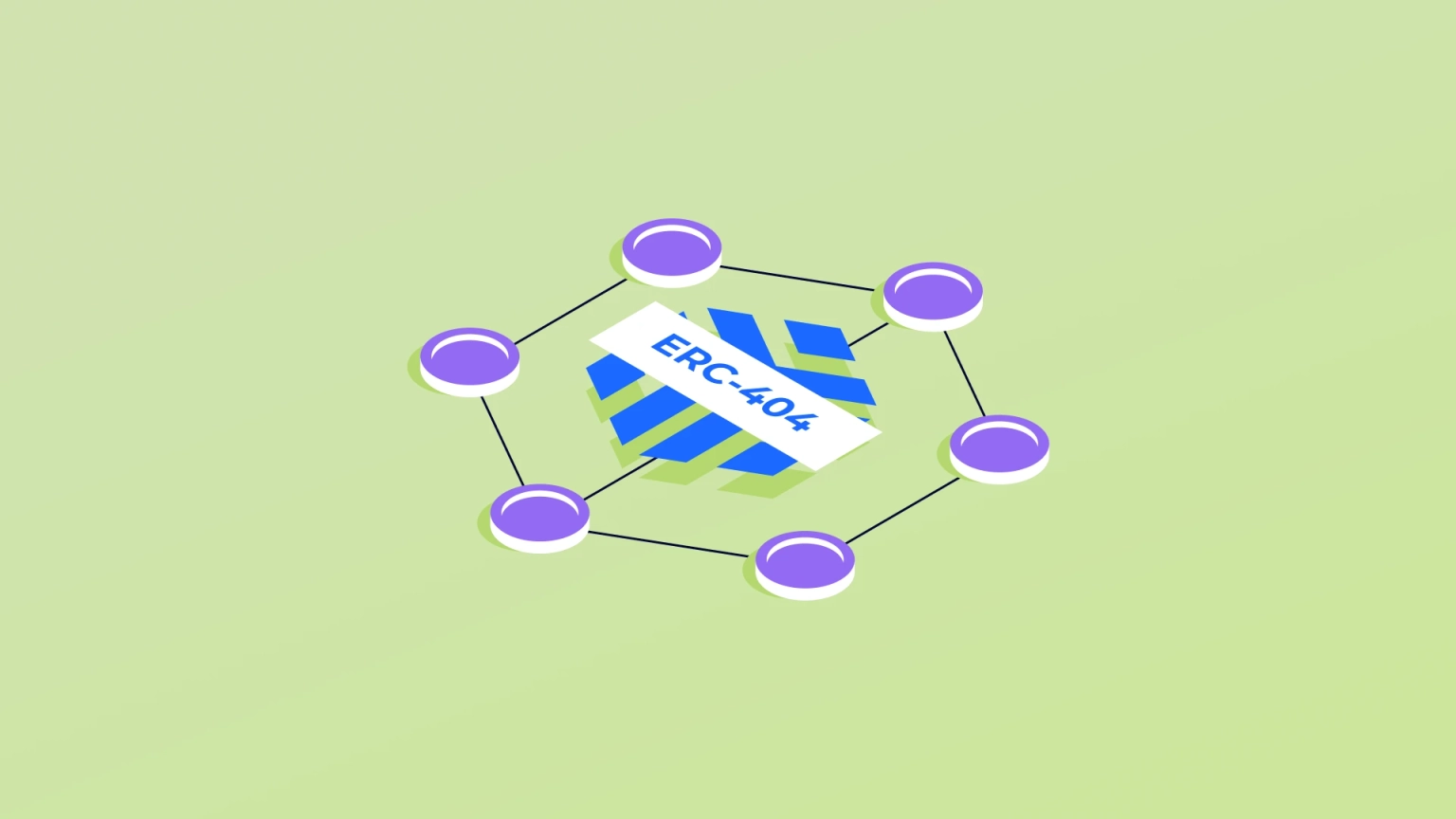
Collaboration between Neptune Mutual and SushiSwap
Explore Neptune Mutual's ongoing collaboration with SushiSwap offering several benefits.
Youtube Video
Playing the video that you've selected below in an iframe

Learn about ERC-404, an experimental token standard for creating semi-fungible tokens.
Token standards in Ethereum are central to owning digital assets and the blueprints that define how tokens can be created, issued, and managed. They ensure that tokens adhere to a specific set of rules, making them interoperable with various applications and services within the Ethereum ecosystem.
Recently, ERC-404 has emerged as a buzzing topic with lots of speculation in the crypto space. Those who have been in the loop might have understood that it’s an innovative but unofficial token standard, attempting to blend ERC-20's fungibility and ERC-721's uniqueness.
However, it’s kind of a mystifying topic on a deeper level. What does ERC-404 entail, and why does it matter? Let’s find out.
ERC-404 introduces the concept of semi-fungible tokens. Created by developers, pseudonymously known as "ctrl" and "Acme from Pandora Labs," this experimental token standard aims to combine the best of both worlds: the liquidity of ERC-20 with the uniqueness of ERC-721.
Although ERC-404 is still in its experimental phase and hasn't been officially proposed as an Ethereum Improvement Proposal (EIP), its potential is undeniable.
The ERC-404 standard conceptualizes a new class of tokens that are both divisible and unique. This innovative approach opens several possibilities for digital assets, allowing for fractional ownership of NFTs and expanding the utility and liquidity of digital assets on the blockchain.
You could own a piece of rare digital artwork or a fraction of a virtual real estate property with the deployment of ERC-404 tokens. This makes sure that previously inaccessible, high-value digital assets are more attainable and liquid.
Making a token that is both unique and fungible could seem tricky. Let’s see the concept behind it.
Understand that each ERC-404 token is linked to an NFT. This means that when you purchase a token, a corresponding token is minted in your wallet. Similarly, when you mint an NFT, you’ll receive a fungible token associated with it.
Selling a fraction of a token will burn the NFT associated with it. And interestingly, when you collect enough fractions of the token to form a whole token, a new NFT is minted. This makes sure that each integral token always associates an NFT with it.
The best part is that both the tokens and the NFTs can be traded independently.
The introduction of ERC-404 could transform the process of asset ownership and trading on the blockchain.
Firstly, it eliminates the need for a direct buyer to sell an NFT, which is a common drawback of today's NFT marketplace. As ERC-404 functions as fungible tokens, they can be sold at any time to a liquidity pool if there’s one available.
Secondly, ERC-404 offers fractionating the NFTs, allowing shared ownership of the assets. This lets you sell and buy fractions of the NFTs, allowing access to high-priced digital assets and solving the issue of inadequate liquidity.
However, as an experimental and unaudited standard, ERC-404 has not undergone the vetting processes typical of Ethereum token standards. This lack of official scrutiny means that the standard may harbor vulnerabilities that could be exploited, posing significant risks to users and investors.
Moreover, the technical complexities and potential security risks associated with ERC-404 cannot be overlooked. The standard proposes a novel method of token interaction that introduces unique integration challenges. Existing platforms and wallets, designed to accommodate either fully fungible or non-fungible tokens, may require significant updates to support this hybrid approach.
Some notable projects have emerged with the application of ERC-404. Let’s see them briefly.
A tangible manifestation of ERC-404's potential is seen in the Pandora project. The project was launched on February 2nd with 10,000 PANDORA tokens and 10,000 associated NFTs called Replicant.
1/
— Pandora (@Pandora_ERC404) February 2, 2024
Pandora is the first token built on the ERC404 token standard, an experimental token standard that we have open sourced for creators and developers alike.
But what is an "ERC404"?
These NFTs, represented as boxes, have sparked considerable anticipation within the community, with investors eager to see what they will reveal.
Since its inception, the value of PANDORA has skyrocketed, with its market capitalization reaching an impressive $325 million. This rapid ascent is a clear indicator of the market’s enthusiasm and prospect for further growth.
DeFrogs is another notable project within the ERC-404 landscape. Developed in July 2022, DeFrog's recent adoption of the ERC-404 standard has boosted its popularity.
It offers 10,000 frog-themed NFT artworks with unique features and accessories. With the purchase of a whole DEFROGS token, you'll receive a unique NFT in your wallet.
A collection of 10,000 DeFrogs enabled by an adjusted version of ERC404, an experimental token standard enabling persistent liquidity and semi-fungibility for Ethereum NFTs. (ERC20 X ERC721) #erc404 https://t.co/BV78woZoB5https://t.co/80IseF0Pen pic.twitter.com/8FyYed3ahX
— DeFrogs (@DeFrogsToken) February 6, 2024
Despite not experiencing the same meteoric price surge as Pandora, DeFrogs has nonetheless made significant waves in the market. The project's tokens reached a peak value of over $3,500, demonstrating robust market interest and the potential for substantial growth. As of the latest updates, the value of DEFROGS tokens has adjusted to around $1,255.
The crypto and DeFi spaces possess immense growth potential, with new innovative projects and technologies emerging continuously. Innovations like the ERC-404 standard are perfect examples of the evolving crypto sector.
However, it’s no secret that the space is full of threats as well. Malicious actors always look to exploit vulnerabilities and drain your wallets. Smart contract vulnerabilities, phishing attacks, flash loan attacks, Sybil attacks, DoS, rug pulls, etc. are some of the existing threats.
Remaining vigilant against such threats is a must for staying safe. However, that’s not enough. Users should research thoroughly for projects and engage with only reputed ones. Smart contract audits significantly reduce the risks, but they are not the ultimate guard against the threats.
DeFi insurance has emerged as a critical tool for mitigating risks against DeFi threats. Talking of DeFi insurance, let’s explore Neptune Mutual.
Neptune Mutual is a solution we designed to enhance the security and protection of digital assets with DeFi insurance. It offers protection against financial losses caused by various risks, like smart contract vulnerabilities, hacks, or any other security issues.
It operates on a parametric model, meaning that payouts are based on predefined parameters rather than lengthy claim verification and proof of loss.
We are the providers of a marketplace where project owners can create cover pools. ERC-404 projects looking to protect their projects and the community around them can create a cover pool in our marketplace. It allows your users to purchase cover policies and protect their funds from unpredictable DeFi risks. Reach us through our contact page so we can have discussions regarding the pool size and appropriate parameters.
As an individual engaging in ERC-404, you should urge the project to take a look at Neptune Mutual’s cover solution.
To know more about Neptune Mutual, follow us on X (Twitter) and join our Discord chat.